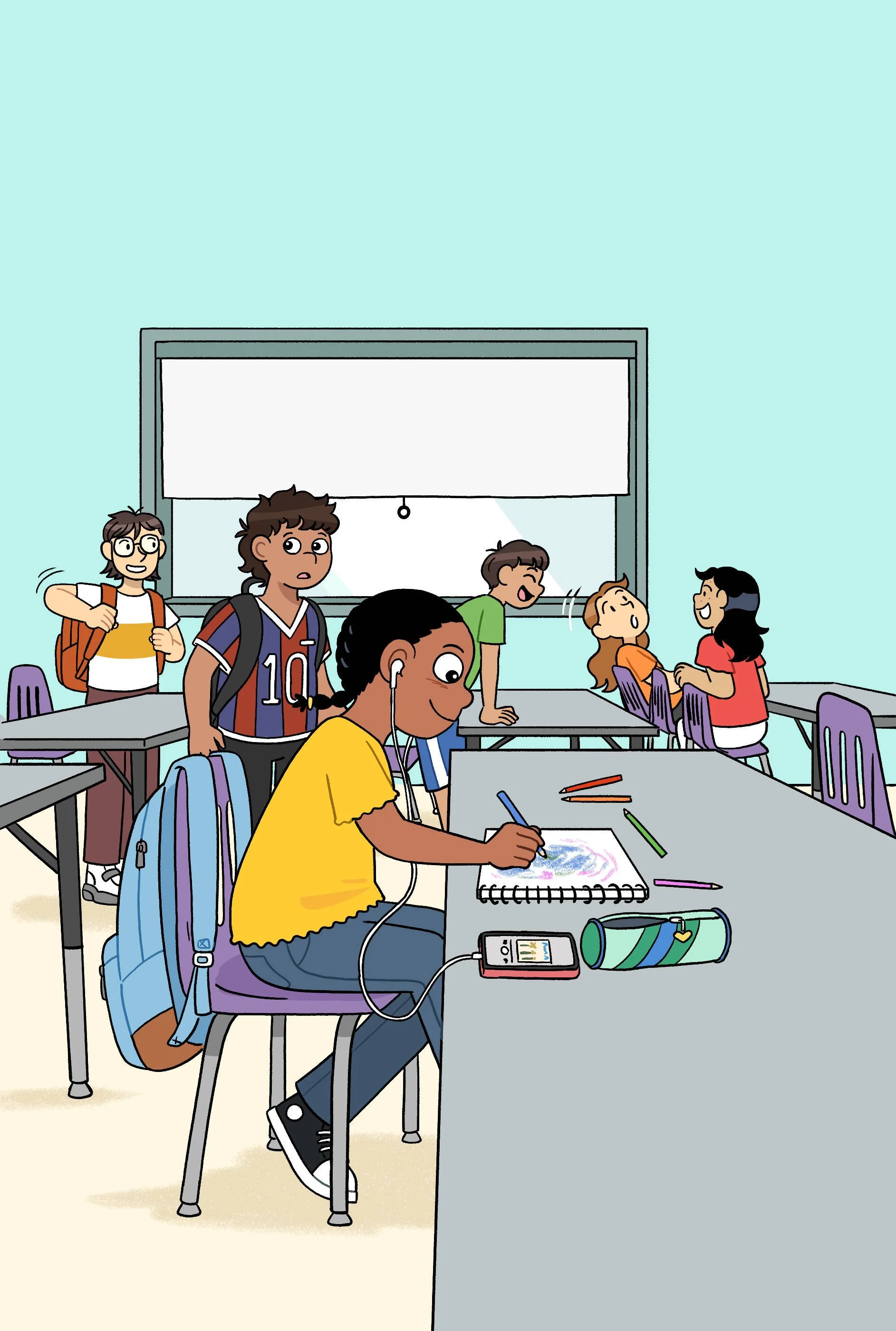Most Kids Have Five Senses.
Rosie Has Six.
Rosie has always been able to sense colors— and she thought everyone else could too. When the first meeting of the middle school math league ends in embarrassment, Rosie wonders why she’s suddenly the only kid in class who knows that every number, letter, and song has a special hue of its own. Even her best friend, Harper insists there’s no such thing as “brain colors.” While searching for an answer, Rosie befriends an oddball music geek named Yara who tells her that she isn’t alone, and her experience has a name—synesthesia.
A middle grade graphic novel coming to a bookstore near you, September 22, 2026.

